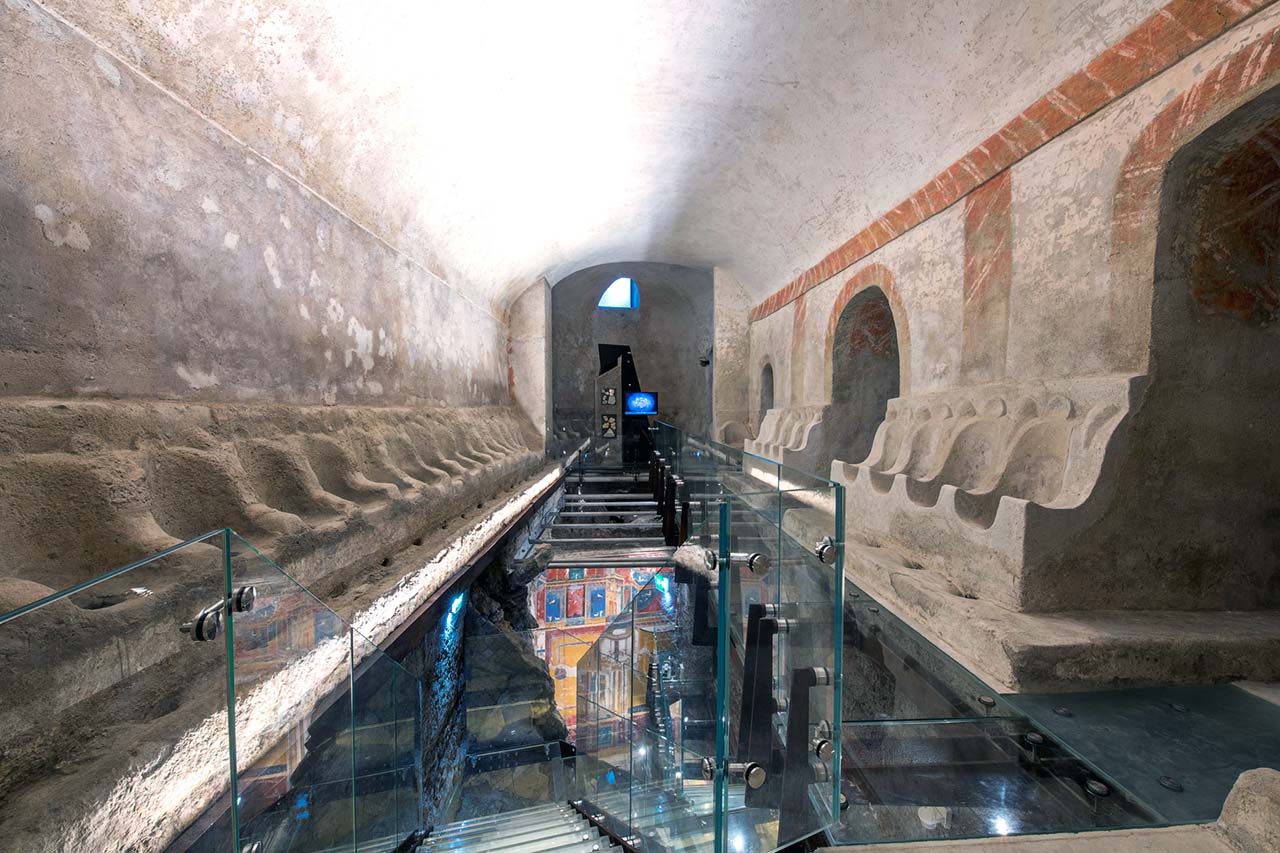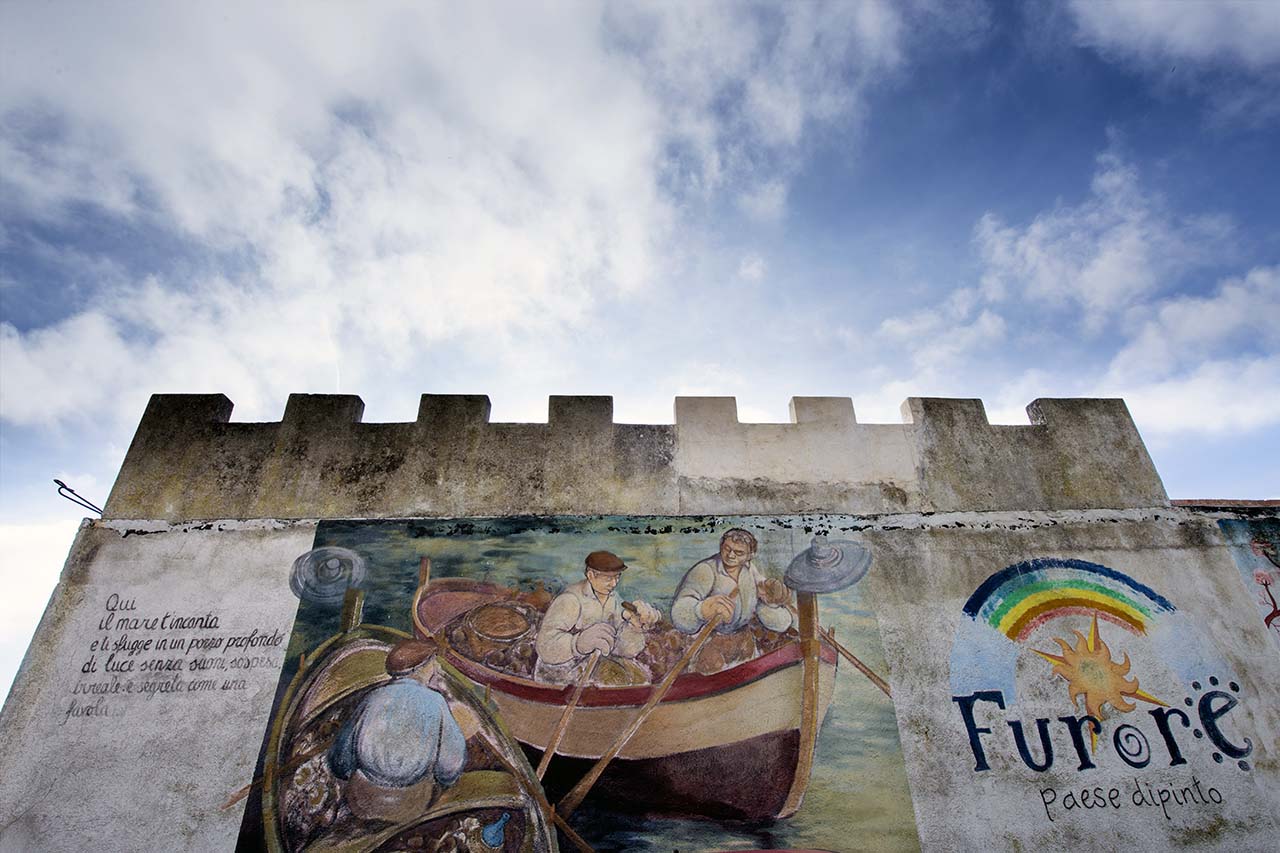An off-season mini-vacation to best experience hubs of archaeology and open-air museums
January 8th, 2023. By Editors
People often wonder when is the best time to visit the Amalfi Coast. A coveted destination internationally during the warm season, only some are aware of its appeal during the colder months. These are the times of the year when it is possible to savor and experience the whole essence of this land. Its fascinating silence, its panoramas that absorb the magic of slow tourism, or rather its most intrinsic meaning.
The streets of the villages, mostly frequented by residents, the paths immersed in nature, which, thanks to the mild winter climate, become destinations for hiking trips, especially in the early morning hours, the places of art, which are uncrowded, can be visited with much calmer and tranquility. For all these reasons, opting for a mini-vacation on the Amalfi Coast out of season can turn into a cognitive experience where you can touch this land’s genuine authenticity and genuineness. We accompany you, then, on a three-day itinerary to discover its artistic beauties.
Positano’s Mar Museum
After strolling through the alleys filled with small stores and craft stores that gave birth to Positano Fashion, one arrives at Flavio Gioia Square. Here, just below the oratory of the church of Santa Maria Assunta, is the Roman Archaeological Museum- MAR. A true archaeological hub carved out of an ancient Roman Villa dating back to the end of the 1st century BC. At one time, the museum was a luxurious residence that was probably designed as a dwelling dedicated to “otium” (leisure time). In this vacation home, the nobility of the past spent time regenerating and resting.
You can access the museum by descending the stairs on the square’s right side. Here the upper crypt opens, which houses display cases containing some osteological artifacts recovered during excavations. A little further on, a large room exhibits as many as 69 masonry colatoi seats that, it seems, were used in Bourbon times to dry the bodies of the deceased. The adjacent room preserves a succession of display cases containing furnishings and various objects, including vessels, vases, work tools, and candlesticks reminiscent of daily life. The heart of the museum is the triclinium, located 11 cm below the upper crypt. Here a series of early Fourth Style frescoes decorate the entire room.
The upper part preserves stuccoes depicting cupids, hippocampi, and dolphins. Further below, some images illustrate mythological narratives, including Chiron lecturing Achilles, Dionysus, a woman, and a child. Below the last part of the fresco are paintings of Juno and animals, including peacocks, which have always been a symbol of wealth and rebirth. A few steps from the museum, another room brings to life the remains of an early medieval hypogeum, probably built just before the 12th century. It is located about 5 meters below the mother church. The room preserves some colatoi seats for the drying of the dead. The central apse is covered by two cross vaults and rectangular one-by-four barrel vaults. There are also fundamental elements inside, including tortile columns.

Praiano’s NaturArte trail
Famous for the luminaria of San Domenico, the festival of lights that takes place every year in August, for being home to the historic Torre Asciola, former art lab of artist Paolo Sandulli, and for hosting the innovative and young Mare Art Project, the first art residency hub on the Amalfi Coast, which hosts young creatives from all over the world, in Praiano art merges with nature. It is no coincidence that Praiano is the land of the popular NaturArte trail. Eight paths allow people to get around and discover the village on foot.
The itineraries, themed, tell through art the traditions and history of Praiano. A project was born in 2016, which involved eight local artists in giving an identity to the various paths. In total, there are 150 sculptures made of ceramic and stone. It is a set of works related to local culture, traditions, and mythology in a continuous dialogue with the surrounding environment. The first itinerary, Mao’s, collects works by Amalfitan sculptor Francesco Mangieri (aka Mao) and runs from Via Croce to the Concetto di Santa Maria a Castro. The second “The Myth of Ulysses,” collects works by artist Sandro Mautone and runs on Via Degli Ulivi and Via Costantinopoli. “Abstract Masks” exhibits Via Croce’s various colorful masks made by Patrizia Marchi.
The 4th tells “The Legend of the Janare” at the hands of artist Enzo Caruso, then moves on to “The Sea and the Art of Fishing” with Lucio Liguori’s arranged installations along Rezzola Street and Masa Street. “Floating Stones and Hidden Words,” on the other hand, is the route that hosts Fernando Vassallo’s works from Constantinople Street to the church of the same name; “the revisiting of the idea of votive aedicule” that pays homage to sacred symbols at the hands of Fausto Lubelli. The final itinerary, the eighth, “On the road of memory,” exhibits, finally, Paolo Sandulli’s works on Terramare Street.

The murals of Furore
The painted village is how Furore is known. In 1983, thanks in part and above all to the contribution of Raffaele Ferraioli, mayor of the town at the time, the village became a crossroads for artists from all over Italy and different parts of the world who came to the Amalfi Coast to decorate the walls of Furore.
More than 120 works collecting paintings and sculptures outline the artistic vocation of the village. At the entrance to the town are the creations of two Avigone artists, Hugo Sanze and Arno Geisseler, known in the graffiti industry as Repy. Near the fjord, on the other hand, one can admire the depiction of the fjord in the work of Antonella Costa, a Ligurian painter, and not far from there, the work “La Madonna delle Cicale” by the Neapolitan artist Carla Viparelli. The paintings slowly unfold, like a museum, under the open sky, throughout the village.
A project that testifies to the nature of a destination that has always embraced the different cultures that have taken root in the area over the centuries without distorting its actual absence but simply enriching it.
